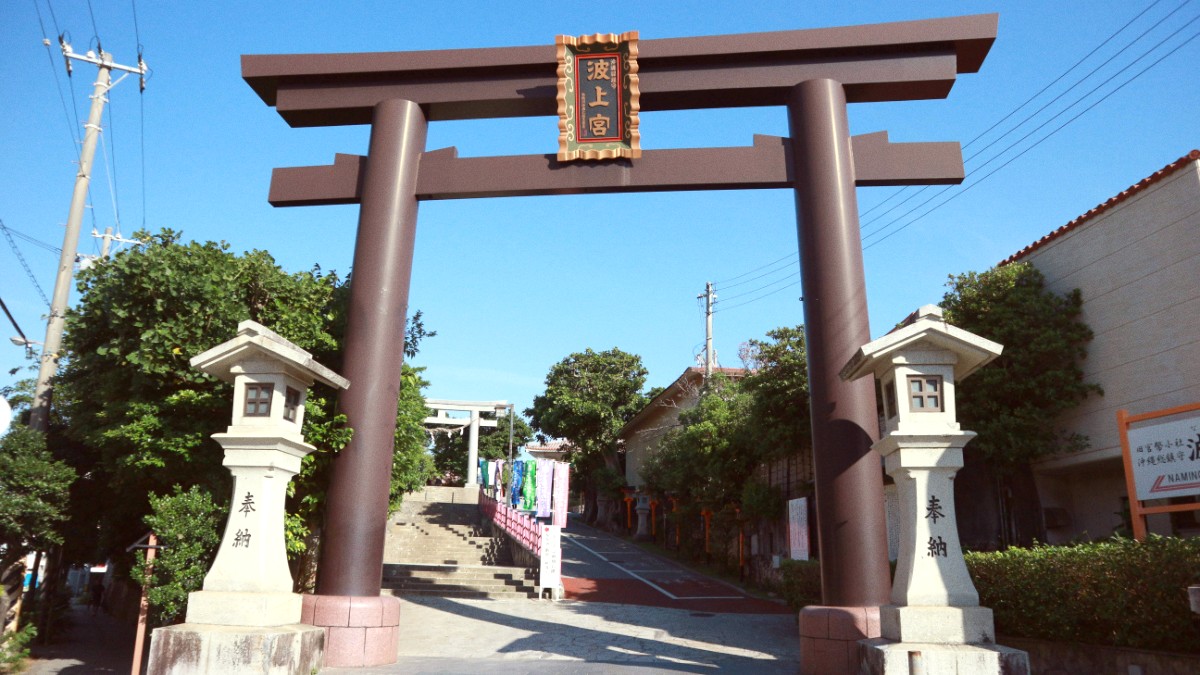
Okinawa And The Southwest Islands, Japan
The city's landscape weaves together ancient royal heritage, post-war reconstruction, and a lively contemporary spirit.
Visitors can journey through time, from the grand palaces of former kings to solemn WWII sites, experiencing the island's unique resilience and cultural richness.
These landmarks tell the compelling story of Naha and Okinawa.
See 8.1 for details.
See 8.2 for details.
Okinawa's most important Shinto shrine, perched on a cliff overlooking Naminoue Beach. Dedicated to gods associated with the sea. Its unique cliffside location makes it visually striking. Free admission to grounds.
Remains of a grand stone gate that once led to Sogenji Temple, the royal ancestral temple of the Ryukyu Kingdom. A designated Important Cultural Property, it is a poignant reminder of the kingdom's grandeur. Open access, no fee.
Beyond its urban core, Naha unveils tranquil green spaces and less-traveled pathways, inviting exploration.
The only public beach within Naha city, located next to Naminoue Shrine. A small, artificial beach for convenient access to swimming or sunbathing. Swimming usually okay April-October. Free access.
See 8.1 for details. This landscaped garden creates a serene natural setting within the city.
A large urban park with a mangrove forest, a lake (Manko Wetland), and a bird sanctuary. This wetland gains recognition as an important Ramsar site for migratory birds. It creates an unique ecological experience within an urban setting. Free access.
Good for birdwatching and a peaceful stroll away from the busy city center. Bring Binoculars if you enjoy birdwatching.
This beach can get crowded, especially on weekends and during peak summer. It suits a quick dip or a brief period of relaxation if time is limited.
While mentioned as a cultural institution, it truly shines as a hidden gem, especially in the evening. It creates a more authentic, less touristy atmosphere than Kokusai-dori, with local eateries and bars.
Beyond the main Tsuboya Pottery Street, venture into the narrower, less-trafficked back alleys. Here, discover smaller, traditional workshops, charming cafes, and a quieter side of the district.
Located on Kokusai-dori, this center is easy to overlook. It details various traditional Okinawan crafts like Ryukyu Glass, Bingata dyeing, and Tsuboya pottery. It sometimes grants opportunities for hands-on experiences.
While the building itself is gone, the spot creates an unique perspective on the city's redevelopment and history.
Naha's appeal extends beyond its well-known sites, reaching into the daily rhythms and quiet corners that truly define the city.
From market alleys to serene gardens, each step uncovers a layer of Naha's distinct personality.
Discover the less visible cultural threads that weave through Naha's urban fabric, from ancient customs to local community life.
Naha's architecture tells a story of transformation, blending traditional Ryukyuan styles with modern Japanese and post-war influences.
Discover the pockets of green that offer respite from the city's energy, providing spaces for relaxation and connection with nature.
For a experience of Naha, look beyond the most publicized attractions and explore the city's diverse layers.
Strategic planning allows for a fulfilling sightseeing itinerary that covers Naha's diverse attractions.
Group nearby attractions to minimize travel time and maximize exploration.
Verify hours and closures for museums and gardens, especially on Wednesdays.
For organized experiences, visit GetYourGuide to book tickets or guided tours.
Naha's Yui Rail monorail connects many major attractions, making movement around the city easy.
Monorail Map & InfoSpring (March-May) and Autumn (October-November) bring pleasant weather, ideal for exploring outdoor sites.
Early mornings or late afternoons avoid harsh light and larger crowds at popular spots like Shuri Castle.
Consider a guided tour for insights into historical contexts and cultural refinements, especially for sites like Shuri Castle.
Find Tours on GetYourGuideNaha includes attractions that entertain visitors of all ages, making it suitable for family travel.
Many of Naha's major attractions offer accessibility for visitors with mobility considerations.
Allocate sufficient time for exploration and reflection, especially at historical sites.
Naha's allure stretches beyond its main attractions, inviting exploration into its local life and everyday rhythms.
Wander through residential areas to experience Naha's authentic community feel and discover charming local spots.
Naha's urban landscape includes various public art installations and murals, reflecting local culture and contemporary expression.
Engage with Naha's local communities by visiting public centers or attending smaller-scale events.
These interactions give a true feel for Naha's spirit.
Step into non-touristy restaurants and izakayas for genuine Okinawan flavors and a lively local dining scene.
Taste the heart of Okinawan cuisine.
Beyond typical tourist shops, seek out stores that specialize in unique, locally made Okinawan crafts and products.
Bring home a piece of authentic Okinawa.
Visit smaller local markets in the morning to witness the city waking up and local commerce in action.
Walk through residential areas as evening approaches to observe local life winding down or beginning its nighttime rhythm.
Stop at a local cafe outside the main tourist zones for a coffee and to observe the everyday routines of Naha residents.